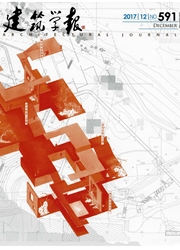

 中文摘要:
中文摘要:
Secondary disasters and crises such as disordered development and environmental pollution occurring amid the human resettlement process have been a heated academic focus in the field of urban and rural planning. However, the social issues involved in this process have not been given enough attention. This paper studies secondary man-caused disasters with respect to the natural environment and the social and cultural systems, which are linked together by the rapid urbanization process, in order to provide references for future theoretical and practical urban and rural planning studies. The study reveals that during resettlement, typical social issues such as societal anomie, social stratification, and individual poverty have occurred in the Three Gorges Area. The primary cause is that stimulated by rapid urbanization, human settlement development and social evolution have formed a double helix model composed of time and space that is similar to a DNA model, and any mismatched occurrences on either side will likely lead to a social structural problem. As an academic response to the significant urbanization process that is taking place in China, this study reflects the political and economic trends in global environmental change research, as well as the technology trends in humanity studies.
 同期刊论文项目
同期刊论文项目
 同项目期刊论文
同项目期刊论文
 期刊信息
期刊信息
